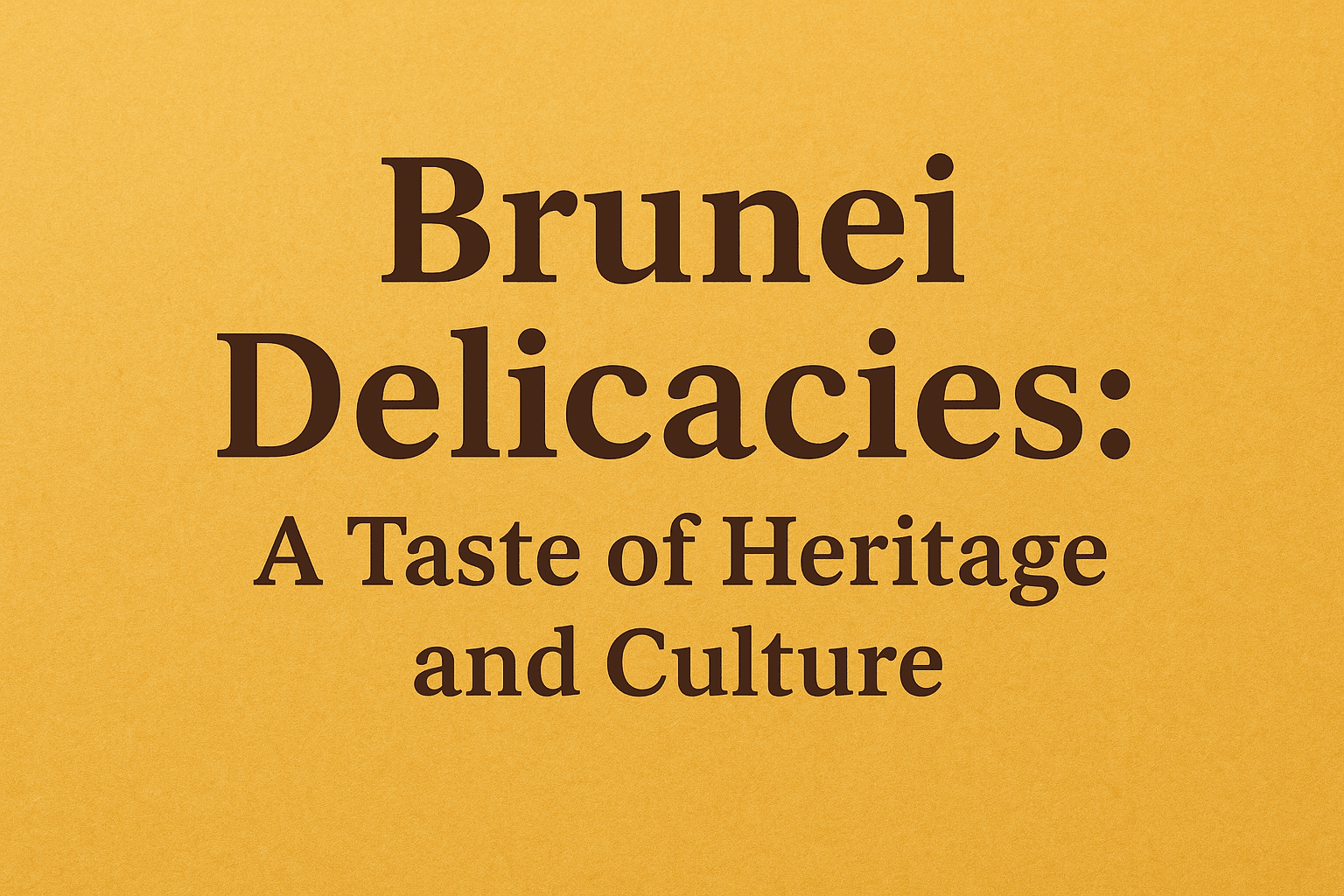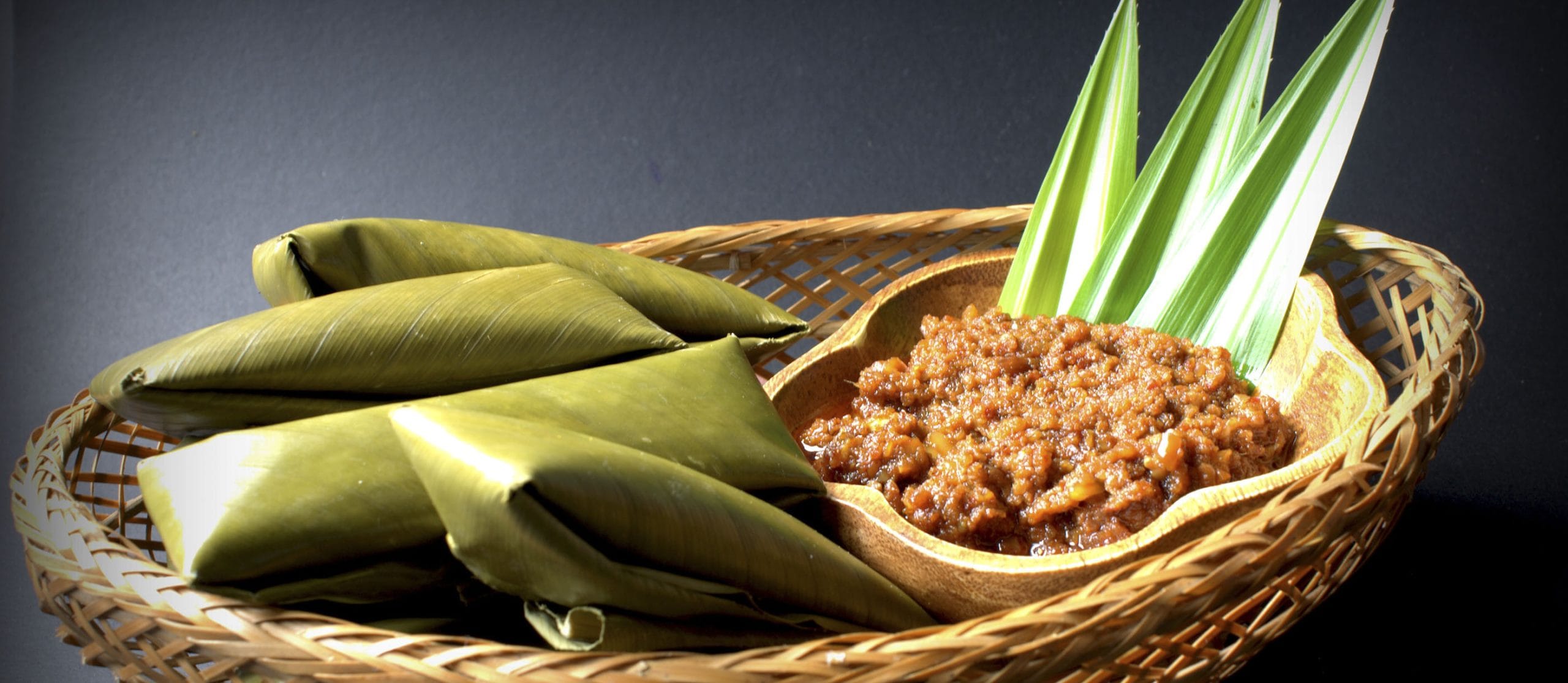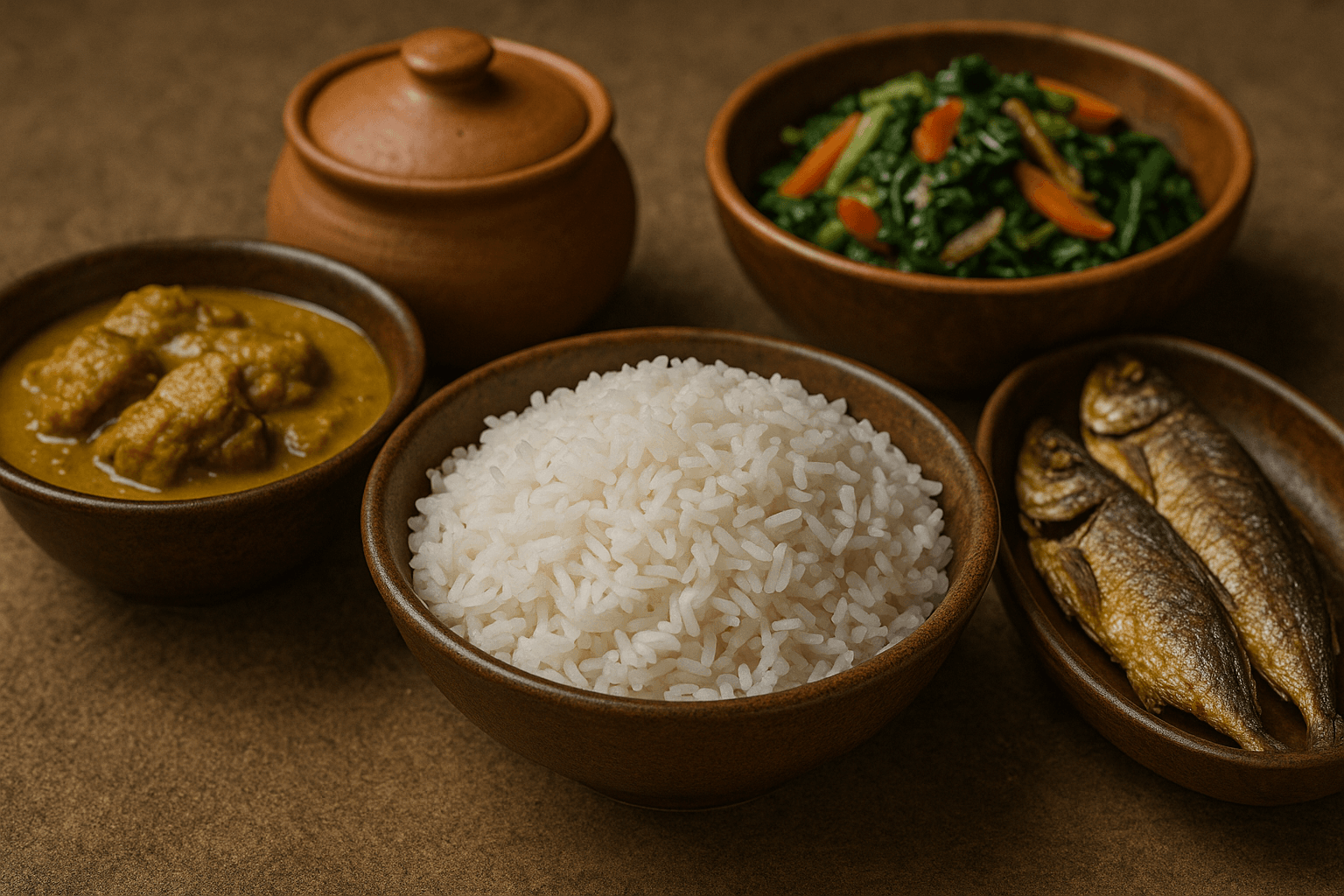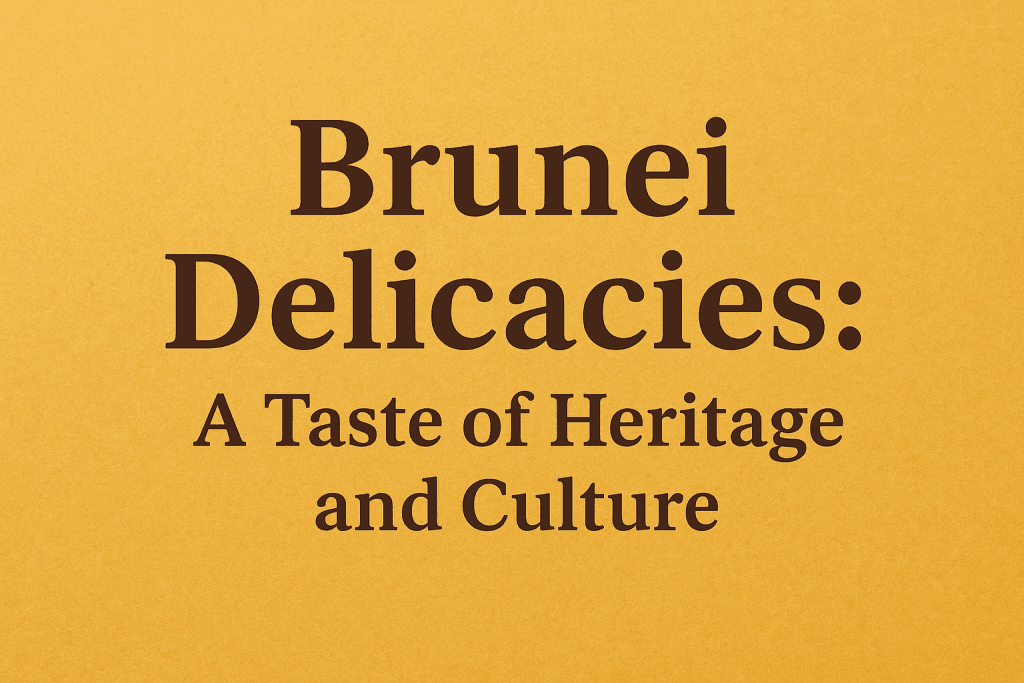When exploring the diverse cuisines of Southeast Asia, one country often overlooked yet rich in heritage is Brunei Darussalam. The culinary traditions of this small but vibrant nation reflect centuries of cultural exchange, Malay roots, Islamic influences, and trade connections across the region. Food here is not only nourishment but also an embodiment of identity, history, and community. This article presents an in depth exploration of Brunei Delicacies: A Taste of Heritage and Culture, showcasing how local dishes preserve traditions while evolving with modern tastes.

The Cultural Roots of Brunei Cuisine
Malay Heritage and Islamic Influence
Brunei’s cuisine is built upon its Malay roots, blending native ingredients with Islamic culinary laws. Meals often emphasize rice, fish, and tropical produce, while avoiding pork and alcohol. This makes many of the signature dishes distinct compared to neighboring countries, yet closely tied to shared Southeast Asian flavors.
Trade and Cross Cultural Exchange
For centuries, Brunei served as a maritime hub. Traders from China, India, and the Middle East introduced spices, cooking methods, and new ingredients. These historical connections are still present in dishes like curries, noodle soups, and sweet desserts flavored with pandan, coconut, and palm sugar.
Community and Celebration
Food is a cornerstone of Bruneian hospitality. Every major festival, wedding, or gathering highlights Brunei Delicacies: A Taste of Heritage and Culture with lavish spreads of rice, meats, vegetables, and sweets. The act of sharing meals reflects unity and collective identity.
Staple Ingredients in Brunei’s Culinary Landscape
Rice – The central staple, appearing in plain steamed form, sticky rice cakes, and rice noodles.
Seafood – Fish, prawns, and squid are abundant due to Brunei’s coastal geography.
Coconut – Used in milk, cream, and grated flesh for both savory and sweet dishes.
Herbs and Spices – Lemongrass, ginger, turmeric, and galangal dominate many recipes.
Palm Sugar – Essential in desserts and drinks.
Bananas and Tapioca – Frequently featured in snacks and puddings.
These ingredients form the backbone of Brunei Delicacies: A Taste of Heritage and Culture, ensuring continuity across generations.
Signature Brunei Dishes
Ambuyat – The National Dish
Ambuyat is a sticky sago starch paste eaten with bamboo sticks and dipped into tangy sauces. It symbolizes national pride and represents the essence of Brunei Delicacies: A Taste of Heritage and Culture. Despite its simple preparation, the experience of eating ambuyat with family and friends is deeply cultural.

Nasi Katok
A popular everyday meal, nasi katok consists of rice, fried chicken, and sambal. Affordable, quick, and flavorful, it reflects the practical side of Brunei cuisine. Though modernized, it remains rooted in traditional flavors.
Hati Buyah
Made from beef lungs stir fried with spices, hati buyah is a unique delicacy often served at festive events. Its strong taste and cultural symbolism make it an essential part of Brunei Delicacies: A Taste of Heritage and Culture.
Pulut Panggang
Sticky rice stuffed with coconut or shrimp, wrapped in banana leaves, and grilled. This snack embodies Brunei’s heritage by combining rice with local ingredients and traditional cooking methods.
Kuih Traditional Sweets
Colorful kuih desserts, such as kuih lapis (layered cake) and kuih cincin, showcase the sweet side of Brunei Delicacies: A Taste of Heritage and Culture. These treats are visually striking and enjoyed at gatherings.
Beverages That Complement Brunei Cuisine
Traditional drinks often highlight coconut, pandan, and herbal infusions. Popular beverages include teh tarik (pulled tea), coconut juice, and iced drinks flavored with syrup or palm sugar. These drinks balance the richness of Bruneian food and play a role in festive dining.
Regional Variations
Although Brunei is geographically small, variations exist in different districts. Coastal areas emphasize seafood dishes, while inland communities may highlight forest produce and rice based foods. These subtle differences enrich the overall identity of Brunei Delicacies: A Taste of Heritage and Culture.
Culinary Practices and Dining Etiquette
Brunei meals are often eaten communally. Diners share dishes from central platters, reinforcing bonds and respect. Hands are used traditionally, especially for rice dishes, though utensils are also common. Hospitality is essential, and guests are always encouraged to eat generously.
Brunei Cuisine in Modern Context
Preservation and Innovation
Younger generations are rediscovering traditional foods while adding modern twists. Ambuyat may now be served with fusion sauces, and nasi katok stalls offer diverse sambal options. This blend of old and new ensures Brunei Delicacies: A Taste of Heritage and Culture remain relevant.
Influence of Globalization
International cuisines influence urban dining, but locals continue to uphold traditional dishes. Food festivals, tourism campaigns, and culinary schools highlight Bruneian heritage while adapting to global audiences.

Brunei Food and Festivals
During Hari Raya Aidilfitri, weddings, and royal ceremonies, food plays a central role. Lavish banquets feature rice, meats, curries, and endless varieties of kuih. These events not only celebrate milestones but also preserve Brunei Delicacies: A Taste of Heritage and Culture.
Street Food and Everyday Eating
Markets and roadside stalls are essential to Bruneian food culture. Vendors serve nasi katok, satay, grilled seafood, and sweet snacks. Eating at these stalls provides locals and visitors alike with authentic experiences tied to tradition.
Health and Nutrition
Traditional Brunei foods emphasize balance: rice for energy, fish for protein, coconut for richness, and vegetables for vitamins. Although modern fast food is available, traditional diets still dominate, offering a nutritious profile tied to heritage.
The Role of Women in Preserving Food Heritage
Bruneian women, especially in rural areas, play a crucial role in transmitting recipes across generations. Family kitchens are where Brunei Delicacies: A Taste of Heritage and Culture are preserved, adapted, and shared. Their contribution ensures continuity of culinary identity.
Culinary Tourism in Brunei
As travelers seek authentic experiences, Brunei promotes its cuisine as a cultural attraction. Food tours, cooking classes, and local markets highlight national identity, making Brunei Delicacies: A Taste of Heritage and Culture both a heritage asset and a tourism driver.
Global Recognition of Brunei Cuisine
Though less internationally known compared to Thai or Vietnamese food, Brunei cuisine is gaining recognition. Regional collaborations, food festivals abroad, and media coverage are elevating the profile of Brunei Delicacies: A Taste of Heritage and Culture on the global stage.
Future of Brunei Cuisine
The future of Brunei food rests in balancing preservation with innovation. By teaching young generations, promoting sustainable farming, and expanding culinary tourism, Brunei ensures that its delicacies remain a taste of heritage and culture for centuries.
Conclusion
Brunei Delicacies: A Taste of Heritage and Culture represent more than just meals. They embody history, community, faith, and identity. From ambuyat to nasi katok, from kuih to seafood feasts, every dish tells a story of heritage. As globalization spreads, Brunei continues to preserve and celebrate its unique culinary traditions, offering the world a flavorful journey into its cultural soul.

